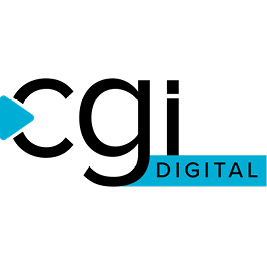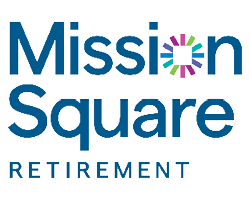2025 All-America City Finalist – Memphis, TN
Memphis is a city of contrasts—rich in culture, civic pride, and grassroots energy, yet still wrestling with the enduring legacy of racial and economic inequity. A majority-Black city that helped shape the civil rights movement, Memphis continues the “phase two” struggle Dr. Martin Luther King Jr. described: achieving genuine economic equality. Generations of disinvestment and white flight hollowed out once-thriving neighborhoods, leaving deep disparities in wealth, health, education, and opportunity.
These inequities now intersect with climate vulnerability. Although Memphis is not especially prone to natural disasters, Shelby County ranks in the 97th percentile for climate vulnerability due to systemic challenges. Black households disproportionately bear the burden of high energy costs, poor air quality, and limited access to climate-resilient infrastructure.
Yet Memphis remains resilient. Programs like Memphis 3.0, the Memphis Academy for Civic Engagement, and the fight against a harmful oil pipeline reflect a city grounded in resident-led change. From grassroots coalitions to city hall, Memphis is building a more equitable and sustainable future through civic innovation and authentic collaboration.
Memphis 3.0
From the 1970s through the early 2000s, Memphis responded to population stagnation by annexing more than 100 square miles of suburban land—doubling the city’s footprint without increasing density. This expansion, paired with decades without a comprehensive plan, led to fragmented development and chronic disinvestment in core neighborhoods.
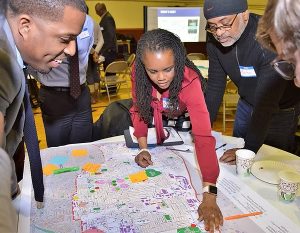 In the mid-2010s, Memphis shifted course. Recognizing the long-term costs of unplanned growth, city leaders launched Memphis 3.0—the first comprehensive plan in nearly 40 years. Built on deep community engagement, the plan emerged through collaboration with nearly 50 local organizations, hundreds of public meetings, neighborhood walking tours, university partnerships, and creative outreach. More than 15,000 residents shaped the vision, prioritizing walkability, neighborhood identity, and equitable economic growth.
In the mid-2010s, Memphis shifted course. Recognizing the long-term costs of unplanned growth, city leaders launched Memphis 3.0—the first comprehensive plan in nearly 40 years. Built on deep community engagement, the plan emerged through collaboration with nearly 50 local organizations, hundreds of public meetings, neighborhood walking tours, university partnerships, and creative outreach. More than 15,000 residents shaped the vision, prioritizing walkability, neighborhood identity, and equitable economic growth.
The plan centers future development around “anchors”: walkable, transit-connected hubs tailored to each neighborhood’s character and needs. It aligns with broader sustainability goals through denser, mixed-use development that reduces emissions and enhances quality of life.
Unanimously adopted in 2019, Memphis 3.0 has since engaged over 73,000 residents and spurred more than $900 million in public and private investment. Now in its fifth year, the plan continues to evolve through new rounds of district meetings and zoning updates, laying the foundation for a resilient, resident-driven future.
Sustainable Workforce Initiatives
Black families in Memphis face deep wealth and income disparities. The median Black household holds just $24,000 in assets, compared to $189,000 for White households. White-owned businesses outnumber Black-owned firms 11 to 1, and the racial wealth gap represents an estimated $25 billion in lost regional revenue. Addressing this inequity is critical to Memphis’ long-term economic and climate resilience.
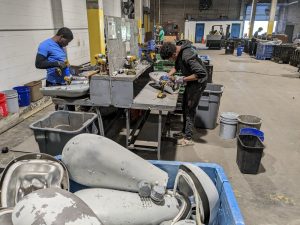
Energy efficiency has become a local priority. While weatherization and home repair programs exist, demand far exceeds the number of certified contractors. To close this gap, the City of Memphis, MLGW, and partners established a new training facility at Moore Tech in 2024. Equipped with a model house for hands-on instruction, the program offers scholarships and aims to train 30 technicians annually, creating access to well-paying green jobs.
In Binghampton, a majority-Black Memphis neighborhood, the BDC Business Hub repurposed a warehouse into a job training center focused on recycling. When MLGW converted 77,000 streetlights to LED, BDC secured a contract to recycle them, creating 58 jobs. The program has expanded to serve other cities, hiring over 90 people since 2021 and offering training in financial literacy and career development.
Healthy Homes Partnership / Lead-Safe Memphis
Memphis ranks last in the nation for housing health, with pests, mold, water infiltration, and lead paint among the most common hazards. Lead poisoning is one of the most urgent crises. Often undetected, it can result in lifelong consequences, including developmental delays, mental illness, and cardiovascular disease.
In response, local advocates and institutions formed the Memphis Lead Coalition (MLC), a collaboration of nonprofits, city and county agencies, hospitals, and utilities built on years of environmental justice organizing. One key member, Young, Gifted & Green (YGG), expanded neighborhood canvassing after joining the Green and Healthy Homes Initiative in 2018. Volunteers provide direct referrals to lead testing and abatement services and connect households to blood lead level testing.
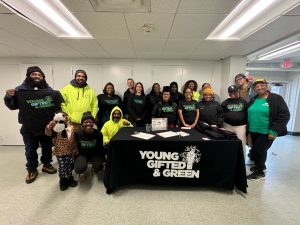 In 2023, Memphis-Shelby County Schools proactively tested all water sources; affected fountains were removed from use. Parents formed Memphis ALARM, a peer support and advocacy group featured in MLK50’s investigative series and the documentary Lead Watch 901. They continue to play a vital role in monthly canvassing and community education.
In 2023, Memphis-Shelby County Schools proactively tested all water sources; affected fountains were removed from use. Parents formed Memphis ALARM, a peer support and advocacy group featured in MLK50’s investigative series and the documentary Lead Watch 901. They continue to play a vital role in monthly canvassing and community education.
The City of Memphis’ Lead-Safe program has reduced lead exposure in over 2,000 homes. In 2019, the city received a $5.6 million federal grant to expand lead hazard inspections, education, and remediation efforts.
YGG has held over 25 events with 190 volunteers, reaching more than 650 residents. In 2024 alone, 85 high-risk homes were referred for lead services. The EPA adopted 80% of the recommendations made during its 2023 Memphis listening session as part of its national Lead and Copper Rule revisions. Together, these initiatives are increasing awareness, reducing exposure, and building momentum toward healthier homes in Memphis.
Some Related Posts
Thank You to Our Key Partners

